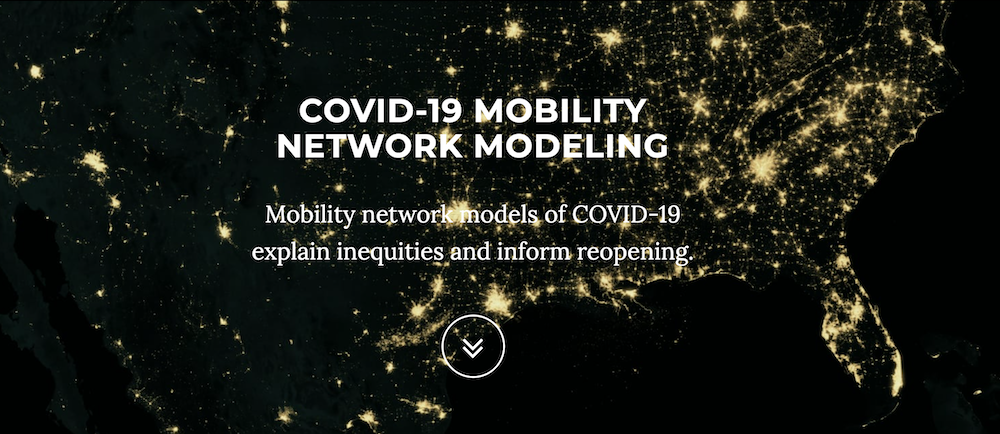Reopening: Mobility network models of COVID-19 explain inequities and inform reopening.

The COVID-19 pandemic dramatically changed human mobility patterns, necessitating epidemiological models which capture the effects of changes in mobility on virus spread.
COVID-19 Mobility Network Modelling have launched a paper and model that tracks the spreading of Covid- 19.
The model predicts that a small fraction of “superspreader” locations account for a large majority of infections, and that restricting maximum occupancy at each location is more effective than uniformly reducing occupancy.
The paper introduces a metapopulation SEIR model that integrates fine-grained, dynamic mobility networks to simulate the spread of SARS-CoV-2 in 10 of the largest US metropolitan statistical areas. Derived from cell phone data, their mobility networks map the hourly movements of 98 million people from neighborhoods (census block groups, or CBGs) to points of interest (POIs) such as restaurants and religious establishments, connecting 57k CBGs to 553k POIs with 5.4 billion hourly edges.
The model show’s that by integrating these networks, a relatively simple SEIR model can accurately fit the real case trajectory, despite substantial changes in population behavior over time.
The model predicts that a small minority of “superspreader” POIs account for a large majority of infections and that restricting maximum occupancy at each POI is more effective than uniformly reducing mobility. The model also correctly predicts higher infection rates among disadvantaged racial and socioeconomic groups solely from differences in mobility: highlighting that disadvantaged groups have not been able to reduce mobility as sharply, and that the POIs they visit are more crowded and therefore higher-risk.
Read the full paper here
Visit the COVID-19 MOBILITY NETWORK MODELING website here
